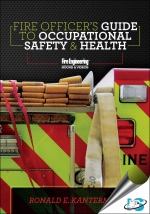Tab Article
There has to be accountability at every level of the organization from the chief to the rookie. Company officers have to step up and remind those under their command of safe operations and related procedures. Accountability at all levels is key to the success of any program, and it’s the key to survival when it comes to firefighter safety.
Who needs this book?
Fire chiefs, fire officers, incident safety officers, and health and safety officers
Why?
To gain the tools they need to operate the department within some acceptable parameters of safety and occupational health
What?
Use this as a guide to safe operations and a healthy work force. Here are the concepts and resources you can find:
- Risk management
- Personnel protection (protecting the protectors)
- Scene safety
- The 16 Life Safety Initiatives and The Courage to be Safe/Everyone Goes Home program
- Training
- Occupational safety and health
- Fitness
- Codes and standards that dictate and/or assist within the genre of health and safety
Ask yourself these questions:
- Have you made firefighter safety and health a primary value of your organization?
- Is there a culture of safety in your fire department?
- Do the chief and line officers "walk the walk" and "talk the talk"?


